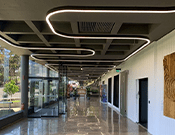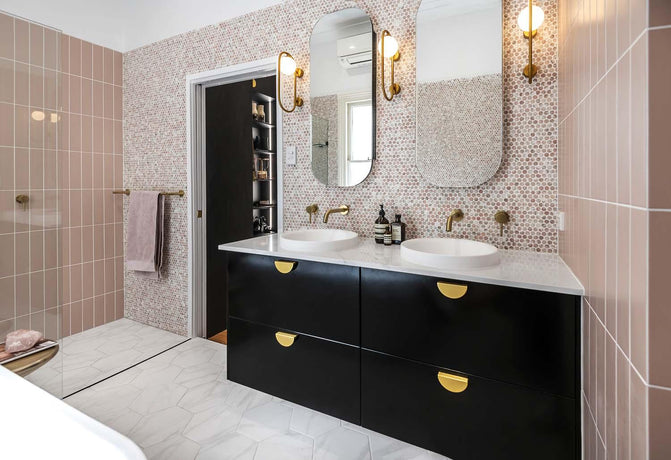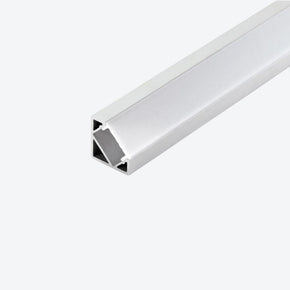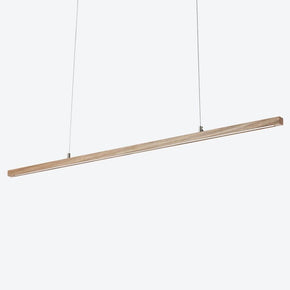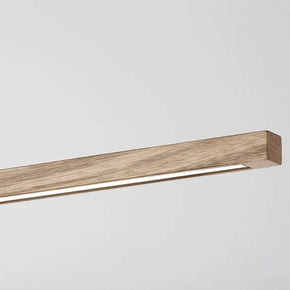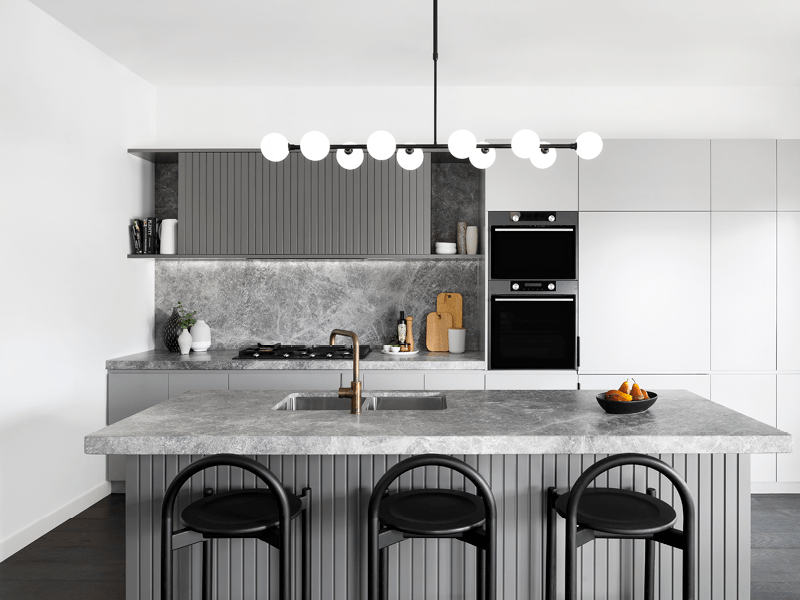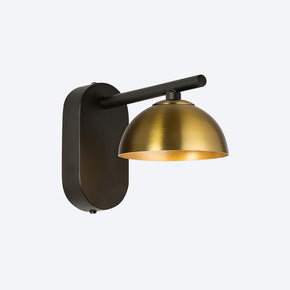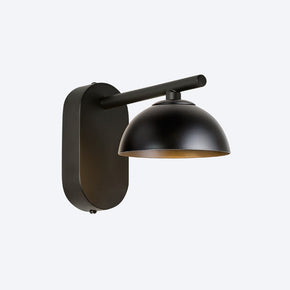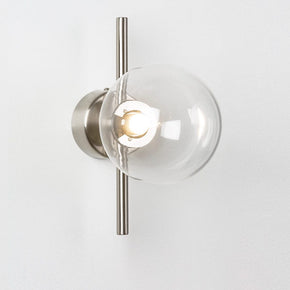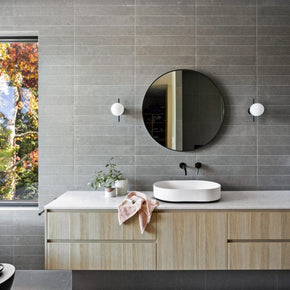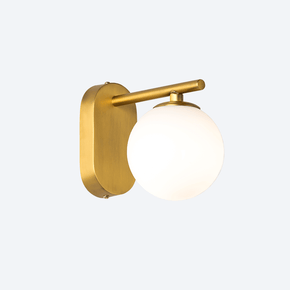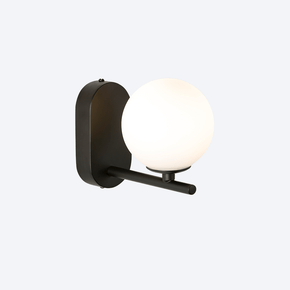- No products in the cart.
- ``
Wall light buying guide
15
Jun
Everything you need to know before buying wall lights
Looking for a new wall light? Whether you’re an interior designer, architect, or homeowner, this buying guide is for you. This guide will take you through all you need to know about wall lights, from what style to choose to what type of bulb to use.
Wall lights, also known as sconces, are particularly popular when space is scarce, and are also a great source of task lighting in areas where you need strong light for certain activities, such as next to a bed for reading, along the length of a hallway, or on each side of your bathroom mirror.
But with so many different styles to choose from, it can often be a little overwhelming when buying wall lights. In this guide, we cover:
-
Types of wall lights
-
Choosing your wall light colour temperature
-
Choosing wall lights for ambient, accent and task lighting
-
Choosing the right wall lights for different rooms
-
Installing and wiring your wall lights
-
Removing or replacing your wall lights
Choosing a wall light
When choosing a wall light, there are a few factors to consider - from the direction and angle of the light beam, to the style and design of the fixture.
Choosing the right type of wall light
Different types of wall lights emit light in different directions, so it’s a good idea to think about what you’re trying to achieve, or what kind of illumination or effect you’re after, before choosing your fixture.
- Out: These usually feature a globe-like or lamp fixture; giving the light rounded illumination, rather than direct.
- Down: Wall lights that are down facing can be great for stairs, hallways, or anywhere you want to draw light to the ground.
- Up: Perfect to use if you’re trying to illuminate architectural intricacies and points of detail, or make the room feel bigger.
- Up/Down: These lights project light both upwards and downwards. These are especially great for outdoor lighting.
- Adjustable: Simply gives you the options to direct the light wherever you would like.

Choosing your wall light style
Choosing the right style of wall light for your space can be hard. Luckily, it’s easy to find wall lights that suit any of your interior desires. Some of the most common styles include:
- Modern wall lights: Usually fittings that are clean and crisp, and are defined by symmetry and sharp angles. Modern wall lights can be a great focal point, but be careful if you have another feature piece in your room, as some modern designs may distract from other pieces.
- Minimalist wall lights: Sleek and simple, yet sophisticated. Usually found in neutral colours and great to use if you’ve already used a lot of colour in your room.
- Traditional wall lights: Inspired by mid-century European design, traditional lights are the perfect style to use if you’re aiming for a timeless style that you don’t have to continuously update trend-wise.
- Natural wall lights: This interior style generally feels very spacious and calming, with an abundance of natural light. When looking for artificial lights to complement a natural interior design, choose fixtures that are inspired by raw materials. Nature-inspired lights usually consist of white, beige and woody tones, and often take organic shapes.
- Industrial wall lights: Industrial wall lights usually have a sense of rawness, with colours and textures drawn from primary materials like metal, wood or concrete. Think high-ceiling NYC loft with brick feature walls, timber furnishings and polished concrete floors.
- Retro wall lights: A style that’s particularly on-trend right now, featuring statement art deco pieces and a mismatch of textures and geometry that create a wow-factor. It combines old with new to create a contemporary yet playful look.
Choosing the number of lights for your space
The number of wall lights you’ll need really depends on the room, the size of your space, and how much light you want to add. “Less is more” is the general rule when it comes to wall lights as otherwise, it can look cluttered, especially if they’re statement pieces.
If you’re unsure, book in for a lighting consultation. Our lighting experts can help you figure out the optimal amount of lighting for your space, while also taking into account your interior design.
Choosing your wall light colour temperature
Colour temperature for lighting refers to the coolness or warmth of light, with cooler being more blue-toned and warmer being more yellow-toned. Measured on a Kelvin scale, the higher the ‘K’, the cooler the light is. The temperature of your light has a big impact on the feeling of your space.
Choosing the right colour temperature completely depends on the colour palette of your home and more specifically the colour of the wall you’re placing the light on. Red, orange and yellow-toned woods will suit a warmer coloured light (2700k to 3000k.) Whereas, if your room consists of cool tones like crisp whites, blues, greens, blacks and grey, it's better to opt for a cooler toned light (4000k to 5000k.)
Generally, we prefer a warmer toned wall light for living areas and bedrooms, in order to create a welcoming and cosy ambience. Choosing a wall light with a cooler temperature can be better for spaces such as a laundry, office space or bathroom, especially if you already have good natural lighting.
Whatever you do, ensure you’re not mixing and matching colour temperatures in the same room. If you already have warm lighting, then it’s best to go for a warm wall light too.
Choosing a wall light based on its purpose
Wall lights for task lighting
Task lighting is a type of lighting used to illuminate specific areas for certain tasks. It’s usually brighter and more focused than general lighting, and it’s often used in combination with general lighting to provide both task-specific and general illumination.
Some common examples of tasks that require task lighting include reading, cooking, crafting and working on a computer. For wall lights in the living room, they could provide reading light next to a comfortable armchair. In the kitchen, wall lights can brighten up the area where you prepare food.
Wall lights for accent lighting
Accent lighting is a type of lighting that’s used to highlight certain features or objects in a space. It’s usually used in combination with general lighting to provide both accent and general illumination.
Some common examples of objects that are often highlighted with accent lighting include paintings, sculptures, architectural features and plants. For wall lights in the living room, they could highlight a piece of art or an architectural feature. In the kitchen, wall lights can accentuate a plant or a backsplash.
Wall lights for ambient lighting
Ambient lighting is a type of lighting that is used to provide general illumination and create depth. It can be either natural or artificial light, but generally helps to create a mood.
Some common examples of ambient lighting include overhead lights, wall sconces and lamps. For wall lights in the living room, they could provide general illumination and create a warm and inviting atmosphere. In the kitchen, wall lights can provide ambient lighting and make the space feel more open and bright.
Using dimmers for a layering affect
Did you know that multiple wall lights can be placed on dimmers? Using dimmers gives you the option of both task lighting and ambient lighting, as you can increase or decrease the intensity of your lighting. When your wall lights aren't being used at their full capacity, it can also help to save energy and preserve the life of your lights!

Wall lights for highlighting art
When it comes to accentuating art with wall lights, there are a few key things to keep in mind. First, you'll want to make sure the lights you choose are the right size for the artwork. Too small and they'll get lost in the p iece; too large and they'll overwhelm it.
Larger pieces may benefit from directional wall lights placed on either side of the artwork. Wall-mounted picture lights are also an option for highlighting artwork, and can be spaced evenly around the frame for a balanced look.
When it comes to choosing the right type of light bulb, LED bulbs are a good option because they emit little heat (so they won’t ruin your art) and have a long lifespan. You'll also want to pay attention to the light's colour temperature. Warmer tones will bring out the rich colours in a painting, while cooler tones will highlight the whites and blacks.
Finally, don't forget about style! Choose wall lights that complement the aesthetic of your art piece for a cohesive look.
Wall lights for "wall washing"
Wall wash lighting is a type of lighting that’s typically used to highlight walls or architectural features. A wall wash light is mounted on the wall and points upward, washing the wall with light. This can create a number of different effects, depending on the intensity of the light and the colour of the wall.
Wall wash lighting can be used to create an ambient atmosphere, to highlight specific features, or to provide task lighting. It is a versatile lighting option that can be used in a variety of settings.
Choosing a wall light based on the space
Before choosing a wall light for your room, remember to keep in mind the style of that room and purpose of the light. For example, if you need task lighting, then you'll want to choose a wall light that will help illuminate the area of that task. Alternatively, if you just want general ambient lighting, then you can choose a wall light that doesn't have a specific purpose. This will vary for each room, so be sure to plan this out prior to purchasing your wall lights.
Consider the dimensions of your space
If you have a large space or high ceilings
If you have a large space, then you'll want to make sure that your wall lights are either on the bigger side, or you have enough to evenly light up the entire space. If you also have a high ceiling, be extra sure to keep the rule of thirds in mind. If you imagine the wall is split into three equal parts - the top, middle and bottom, these become your design levels. With wall lights in the second third (or middle), you can improve interior design composition, and create balance in your room.
If you have a small space or low ceilings
If you have a small space, then you can choose a smaller wall light as a larger light might make your room look smaller. However, you'll want to make sure that the wall light is still able to provide adequate lighting for the space.
Consider the room
Kitchen and dining room
Task lighting is key when choosing the right wall lights for your kitchen and/or dining room. From cooking to eating to reading the newspaper with your morning coffee, you want to choose and locate wall lights to provide adequate light when performing these tasks.
At the same time, you want the option to create ambience when not utilising the space. Choosing a light with a dimming switch is a great way to give you the option for both functionality and comfort.
Living Room
When lighting your living room, you want to create an ambient space. It’s always fun to get a bit creative in your living room, so a wall-light can be a great opportunity to add some decor to your wall.
Bedroom
Wall lights can be a great option for bedside lighting. This means choosing a light you're happy to get two of. Ambience is key in your room, so go for warmer lighting to help create a warmer space. Again, feel free to get creative! A bedroom is a great place to add personality!.
Hallways and narrow areas
Make sure you opt for wall lights that aren't too large and protrude from the walls, as this will make the space feel smaller. Choosing wall lights that are multi-directional / wall-washing can assist you in opening up and elongating your hallway.
Bathroom
The main thing to remember with bathroom lighting is choosing a wall light with the correct IP rating. Different zones in the bathroom require different levels of safety, depending on how close it sits to a water source.
Find out here the right IP rating depending on where you want to locate the light.
Outdoors
Wall lights can be great for lighting up paths, entertainment spaces or significant wall features in your outdoor areas. You need the option for a well-lit space for tasks, but also should create an ambience that is inviting for entertainment.
Ideally, you will need bright lights (high in lumens) to be able to see, that also have the option to be dimmed. Sensored activated lighting is also a great idea, especially for pathways, to ensure you create a safe environment. Lastly, make sure your wall lights are appropriate for outdoors. Weather-proof lights, or more importantly water-proof, are key, as we know water and electricity don’t mix!
Commercial spaces
Choose bright lighting over ambience in commercial spaces like offices. You want to choose wall lights that offer maximum light exposure, to ensure the space is well-lit and appropriate for working.
Ambience might be more common in a hotel space, where you’re trying to create a comforting mood. With any commercial space, you will generally have a large number of lights, so keeping it within a more modern / contemporary style is a great way to ensure the space isn’t too busy.
Installing your wall lights
Once you’ve selected your wall lights, the next step is installing them.
How to install wall lights
Changing a globe yourself is always fine, given you turn off the power and buy the correct globe for your fixture. Installing any new light, on the other hand, is a job for a fully licensed electrician. The rules are strict in Australia, and for good reason. Illegal electrical work risks electrocution, fire, and fines. It can also affect your insurance, meaning you might not be covered if something goes wrong.
How to wire your wall lights
Like installing a new light, it’s important to get a fully qualified and trusted electrician to do this for your own safety. And again, your insurance may not cover issues that arise from doing your own wiring.
How to hide wall light wires
If your wall light isn’t hard-wired, there are a number of DIY ways you can try to hide the cord. Cord covers are the most common choice, as they’re sleek and made with the purpose of hiding cords. Using a cord cover helps the cord blend into the wall, helping your wall light feature stand out.
How to paint around a wall light fixture
What you want to avoid when painting around a wall light is getting paint on the fixture. Wrap thick masking tape around the perimeter of the mounted bracket to where it meets the wall. Make sure the tape isn’t strong, as this will rip off your original paint. You should also softly place a plastic bag or bin bag over the wall light fixture.
With a smaller brush, paint around the tape with fine strokes to around 5cm beyond the tape. Once you’ve done this, you can use a bigger brush and paint your wall as normal, being cautious that no paint drips onto the fixture when painting above the light. At the very end, peel back the tape and use your small brush to finely fill in any spots you may have missed.
Removing or replacing wall lights
How to change a wall light fixture
Changing a wall light fixture and updating it with a newer and more stylish piece is an easy way to revamp a space. Remember you can only perform this job if your light isn’t hard-wired (i.e. it can be plugged in by the socket).
Firstly, you’re going to want to turn off the power to the original wall light. Every wall light is made and installed in a different way, but for the most part, you’re more than likely going to need to unscrew the mounting bracket to remove the light. Once you have fully removed it, you can then proceed to install your new wall light by following the given instructions.
How to move a wall light fixture
If you’re moving your wall light to a completely new spot where there was no light previously, you’ll need the help of an electrician.
How to remove a wall light fixture
If you want to get rid of a hard-wired wall light, you’ll need an electrician. Once the electrical work is done, you might also need some assistance patching up any holes in the wall. If you’re planning to install a new wall light in the same spot, have the new fixture ready to go so your electrician can install it there and then.
Elevate your space with wall lights
If you need advice on lighting solutions to complement your home, get in touch with the About Space team or book a lighting consultation. We can guide you through picking the right wall lighting to transform your space.
You can also shop our full range here, or visit us in store.






